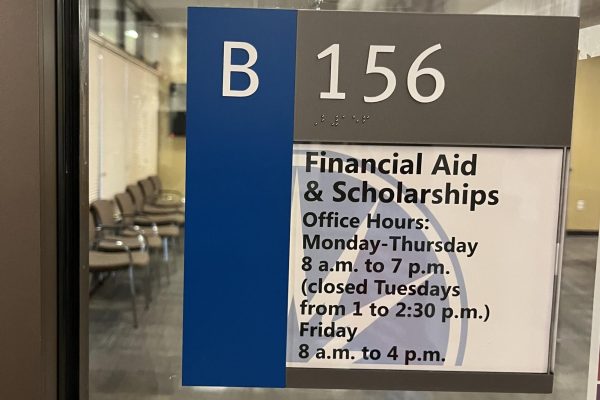Education Crisis in Mexico
Strongly contested education reform passed in 2013, still causing protests and unrest.
September 19, 2016
Civil unrest in Mexico, incited by the 2013 education reform, still has not seen resolution. Rather, the vigor of these protests has only increased. On February 13, 2013, Mexico adopted an education reform that sought to overhaul various aspects of their education system and the bureaucracies that work alongside it. Needless to say, the reform was met with vehement opposition.
Statistics found by the OECD, Organization for Economic Development and Co-operation, found that while Mexico has one of the highest teacher salaries of the 34 cooperating countries, it has the lowest percentage allotted in terms of capital per student. Student drop out rates are at the lowest end of the OECD bracket, more so seen in secondary education. Reports state that only 53% of students pursue higher education in Mexico as compared to 84% in allied countries (Kattan and Miguel: 2014). Along with an inefficiently high student to teacher ratio, schools in many rural provinces lack adequate infrastructure and even basic necessities such as electricity.
The less than adequate education system also results from the unorganized and non-standard relationship between the SNTE and the teachers union, in which recruitment and promotion are based less on achievement or hiring standards and more on inheritance and interpersonal union connections. The SNTE translates from Spanish to the Nation Education Works Union, which essentially monopolized the recruitment process for teachers before the reformatory bill. Union allied teachers were able to retain positions for several years, despite outdated certifications. In turn, fresh graduates faced difficulty finding positions in a market saturated by veterans. Bureaucratic decentralization and disorganization have been consistent in Mexico’s education system due to this systematic monopolization.
The bill passed in 2013 gave schools more autonomy but put a leash around teachers, taking full control of teacher evaluation, certification and salary. A merit based pay and promotion system was adopted as well. Regular testing of teachers to maintain education standards and prerequisite certification checks would topple union corruption.
Disapproving teachers left their classrooms and took to the streets, protesting against these changes. This halted not only the education of numerous students but the overall functionalist progression of the education system.
While most teachers have returned to teaching, some still continue to hold violent riots, characterized with sticks and stones, masks as well. Numerous teachers have resorted to silent protests whilst still continuing to teach. “We shall continue with the fight but we are going to give it a new form,” said union spokeswoman Isabel García. In recent months, teachers have taken to stealing vehicles, in tandem with road blockades, and the vandalization of government property seen since the start of the riots back in 2013. Buses and other forms of public transportation along with their respective drivers have been taken hostage, many of whom were only recently let go, months after the initial capture. Around a hundred buses and drivers were released from union custody, and an estimated five hundred were captured overall. That equates to roughly 500 million pesos or $27 million. Teachers have even been found to coerce local farmers and parents, into providing involuntary support to their barricades, threats have been made to withhold student report cards and refuse education. In some areas, a fine of up to 1,000 pesos or around $50, has been enforced upon those who do not participate in the protests. Local residents have been forced to pay an obligational 50 pesos in order to feed the protesters. “We don’t want anyone to say that we looted [the trucks] or that the drivers were beaten and mistreated. All this was done as a courtesy gesture towards the state government, but if our demands aren’t met, we’ll mobilize again and will radicalize our actions,” said a spokesman for the protesters.
Talks of renegotiation spark and die out with the same crux of transparency. Despite being repeatedly informed of termination risk, teachers held fast. It was since disclosed that around 2,000 teachers are in the sincere process of termination. A majority of teachers that began protesting in May, have this month returned to work. However their work continues through the teachers of tomorrow, students have invigorated their efforts in combating the education reforms.
Students across have taken up arms either in support of their teachers or because they wish to be future teachers themselves. Many are also protesting for the “unrighteous” arrest of roughly fifteen of their peers. Frustrated students are questioning the strict new regulations and standards for becoming teachers. Earlier this month students clad in masks and carrying various objects of violence blockaded a premix distribution terminal. Not only did they shut off access to this terminal but also began helping themselves to free gas. This blockade negatively affects more than 20 municipalities. When teachers returned to work the students only bolstered their protesting.
Conflicting statistics rising from various parties, the Federal Education Secretariat says roughly 70% of schools have begun operation again while the union claims that 90% are still closed. The largest teachers union of Mexico is still mobilizing against the state through blockades at shopping centers, large corporate stores and city Plazas. These blockades have been very debilitating in terms of tourism revenue, estimates from the Economic Development Secretary of Mexico claim a loss of about 6 billion pesos, or $320 million. Nonetheless, protests continue with no sight of remediation.
Though disheartening, the state of education in Mexico serves to humble American students. While issues are present in education around the globe, it is clear that some countries have a lot to be grateful for. Elgin community college has had a total of 47,906 graduates, documented from 1951 to 2015, with 58.6% of students transferring on to universities and subsequentially graduating from there. The campus is both safe but drug-free, less than can be said about many schools in other parts of the world. With counseling, employment, distance learning and a plethora of other services the college leaves nothing to be desired. Multiple award winning teachers also call the school home, and all other staff is qualified, certified and maintains the overall high standard of education often taken for granted in America.






